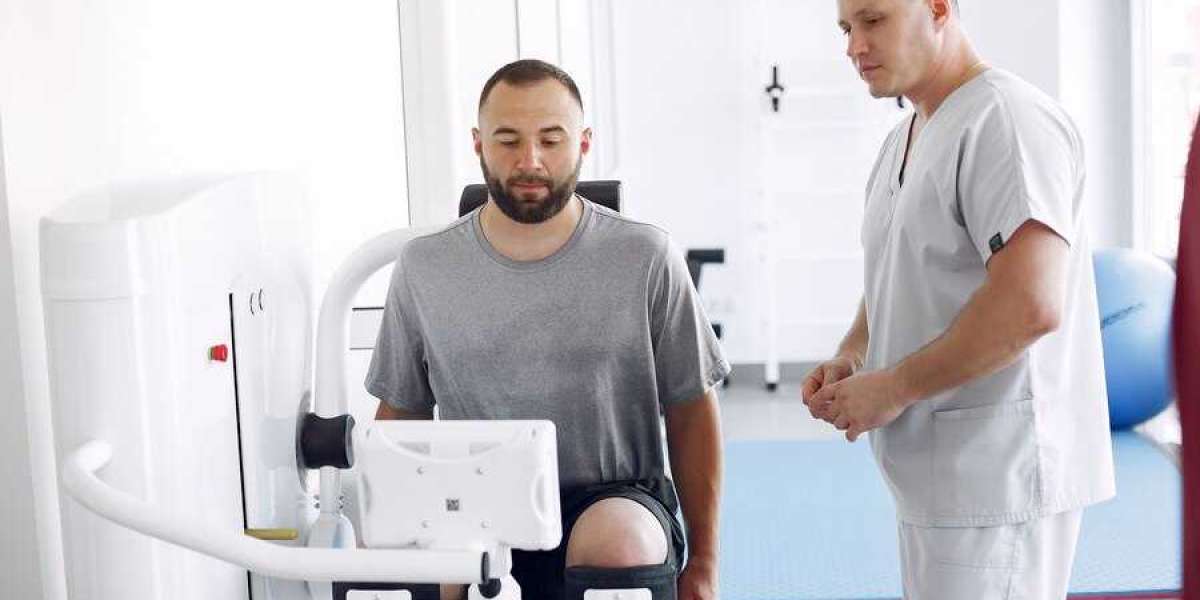Sports injuries can sideline even the most dedicated athletes, affecting performance, mobility, and overall well-being. Whether you're a professional competitor or a weekend warrior, recovering properly is essential to getting back in the game safely. A physical therapist San Antonio plays a crucial role in rehabilitating sports injuries, reducing pain, and preventing future damage.
Why Athletes Need Physical Therapy for Injury Recovery
Sports injuries can result from overuse, improper technique, accidents, or sudden movements. While some minor injuries heal on their own, many require professional rehabilitation to ensure a full recovery. A physical therapist in San Antonio can help athletes by:
- Reducing pain and inflammation through targeted treatments
- Restoring mobility and flexibility to injured muscles and joints
- Strengthening weakened areas to prevent reinjury
- Improving balance and coordination for optimal performance
- Creating personalized recovery plans tailored to each athlete’s sport and position
Physical therapy not only accelerates healing but also teaches athletes how to move correctly to avoid future injuries.
Common Sports Injuries Treated by Physical Therapy
Athletes experience a wide range of injuries, but some are more common than others. A physical therapist in San Antonio frequently treats:
- Sprains and Strains – Overstretched or torn ligaments and muscles
- Torn ACL and Knee Injuries – Common in sports that require sudden stops and pivots
- Tennis Elbow and Golfer’s Elbow – Overuse injuries affecting the tendons in the arm
- Shin Splints – Pain along the shin bone caused by repetitive stress
- Rotator Cuff Injuries – Shoulder injuries common in throwing and swimming sports
- Plantar Fasciitis – Foot pain from excessive running or jumping
- Concussions and Whiplash – Head and neck injuries requiring careful rehabilitation
Each injury requires a customized treatment plan to ensure a safe and effective recovery.
How a Physical Therapist in San Antonio Helps Athletes Recover
A structured rehabilitation program includes several key phases:
1. Initial Assessment and Diagnosis
Your physical therapist in San Antonio will evaluate your injury, medical history, and movement patterns. This step helps identify the severity of the injury and develop a personalized recovery plan.
2. Pain and Inflammation Management
Reducing pain and swelling is the first priority. Therapists use techniques such as:
- Ice and heat therapy
- Electrical stimulation (TENS)
- Soft tissue massage
- Anti-inflammatory exercises
3. Restoring Mobility and Flexibility
Once pain is under control, therapy focuses on regaining movement in the injured area. Gentle stretching, joint mobilization, and range-of-motion exercises help restore flexibility.
4. Strength and Stability Training
Weak muscles increase the risk of reinjury. Strength training focuses on rebuilding the affected area, while stability exercises enhance balance and coordination.
5. Sport-Specific Rehabilitation
Athletes need to train in ways that mimic real-game situations. A physical therapist in San Antonio will incorporate drills, agility exercises, and movement patterns specific to your sport.
6. Injury Prevention Strategies
The final phase of rehab involves learning how to avoid future injuries. Therapists educate athletes on proper warm-ups, cool-downs, and movement techniques to protect against further damage.
Recovery Timelines for Common Sports Injuries
Every injury is different, but here are general recovery timelines:
- Mild sprains and strains: 2-4 weeks
- Moderate muscle tears: 6-8 weeks
- ACL reconstruction rehab: 6-9 months
- Rotator cuff repair: 4-6 months
- Tendonitis (e.g., tennis elbow): 6 weeks - 3 months
A physical therapist in San Antonio will adjust treatment as needed to ensure a full recovery.
When Should an Athlete See a Physical Therapist?
If you experience any of the following, it's time to consult a physical therapist in San Antonio:
- Persistent pain that lasts more than a few days
- Swelling, bruising, or difficulty moving a joint
- Sharp pain during activity
- Weakness or instability in a limb
- A popping sound followed by pain (common with ACL injuries)
Delaying treatment can lead to long-term damage, so early intervention is key.
How to Prevent Sports Injuries
While injuries can't always be avoided, following these tips can reduce your risk:
✔️ Warm up properly before training or competition
✔️ Use correct technique to avoid unnecessary strain on muscles and joints
✔️ Strengthen core muscles to improve stability and balance
✔️ Stretch regularly to maintain flexibility
✔️ Stay hydrated and maintain proper nutrition to support muscle recovery
✔️ Rest and recover—overtraining increases injury risk
A physical therapist in San Antonio can also provide sport-specific guidance to enhance performance while minimizing injury risks.
FAQs About Sports Injury Rehabilitation in San Antonio
Q1: How long does it take to recover from a sports injury with physical therapy?
Recovery time depends on the severity of the injury, but most athletes see improvement within 4 to 12 weeks with consistent therapy.
Q2: Can physical therapy help even if surgery is needed?
Yes! Pre-surgical therapy (prehabilitation) strengthens the body before surgery, leading to better post-surgical recovery.
Q3: Is physical therapy only for professional athletes?
No, physical therapy is beneficial for athletes at all levels, from beginners to professionals.
Q4: Do I need a referral to see a physical therapist in San Antonio?
Texas allows direct access to physical therapy, so a referral isn't always necessary. However, some insurance plans may require one.
Q5: How can I tell if I need physical therapy or just rest?
If pain persists after a few days of rest, or if you struggle with movement, it's best to consult a physical therapist in San Antonio for an evaluation.
Conclusion
Sports injuries don’t have to keep you on the sidelines for long. With the right rehabilitation approach, a physical therapist in San Antonio can help you recover safely, regain strength, and return to your sport stronger than before. Whether you're dealing with a minor strain or a major injury, physical therapy offers a structured, non-invasive path to recovery.
If you’re recovering from a sports injury or looking to prevent one, schedule a consultation with a physical therapist in San Antonio today and take the first step toward getting back in the game!













